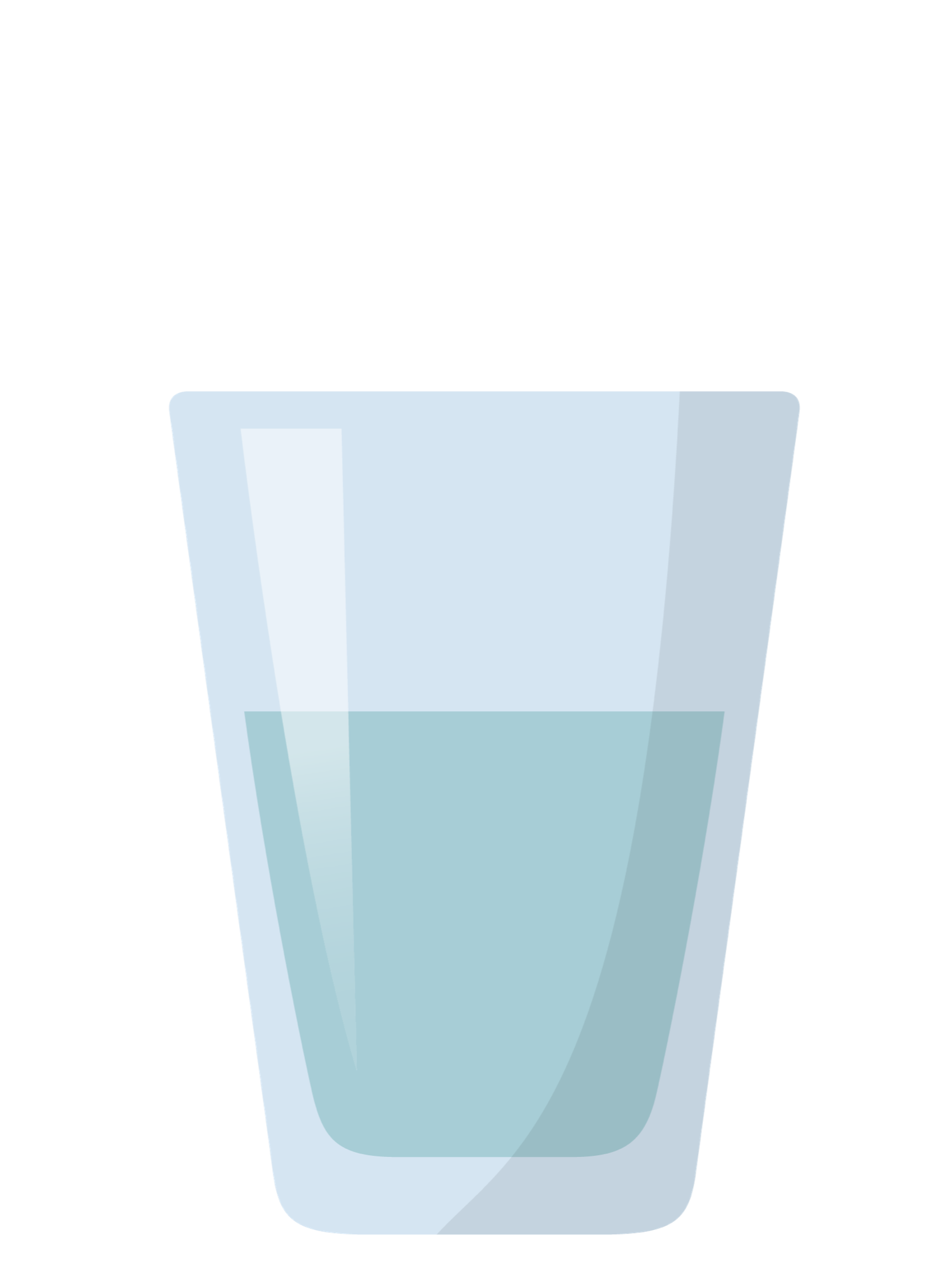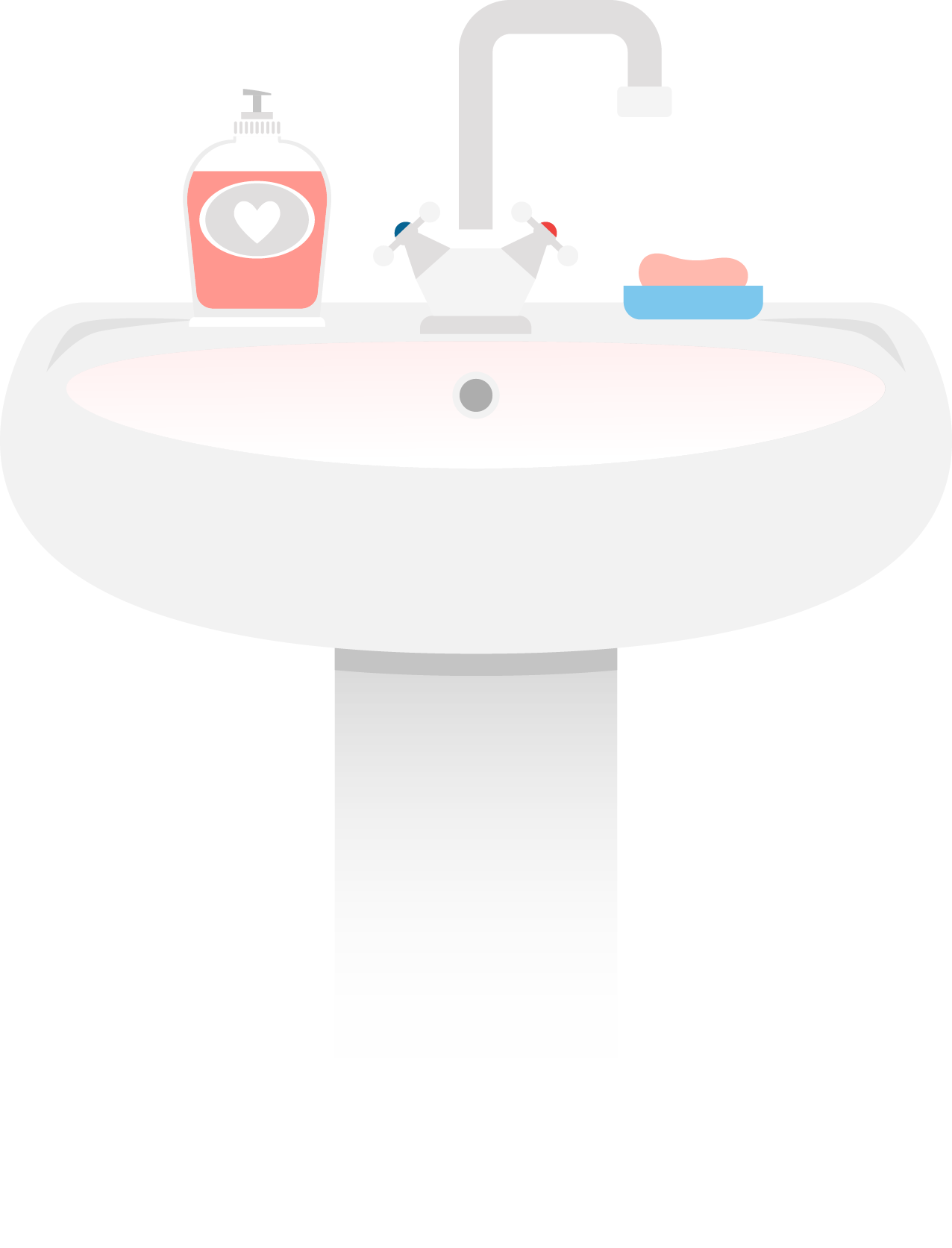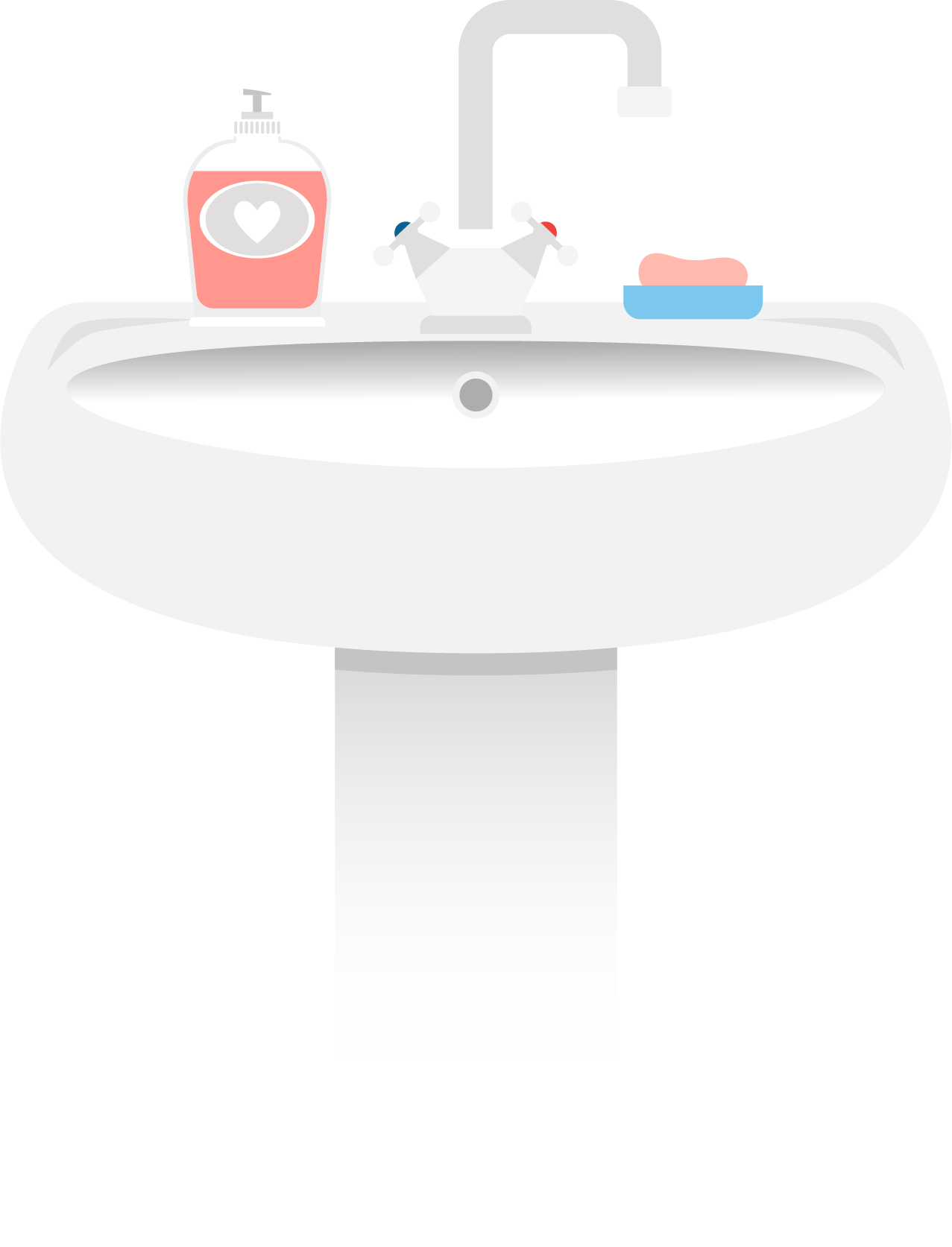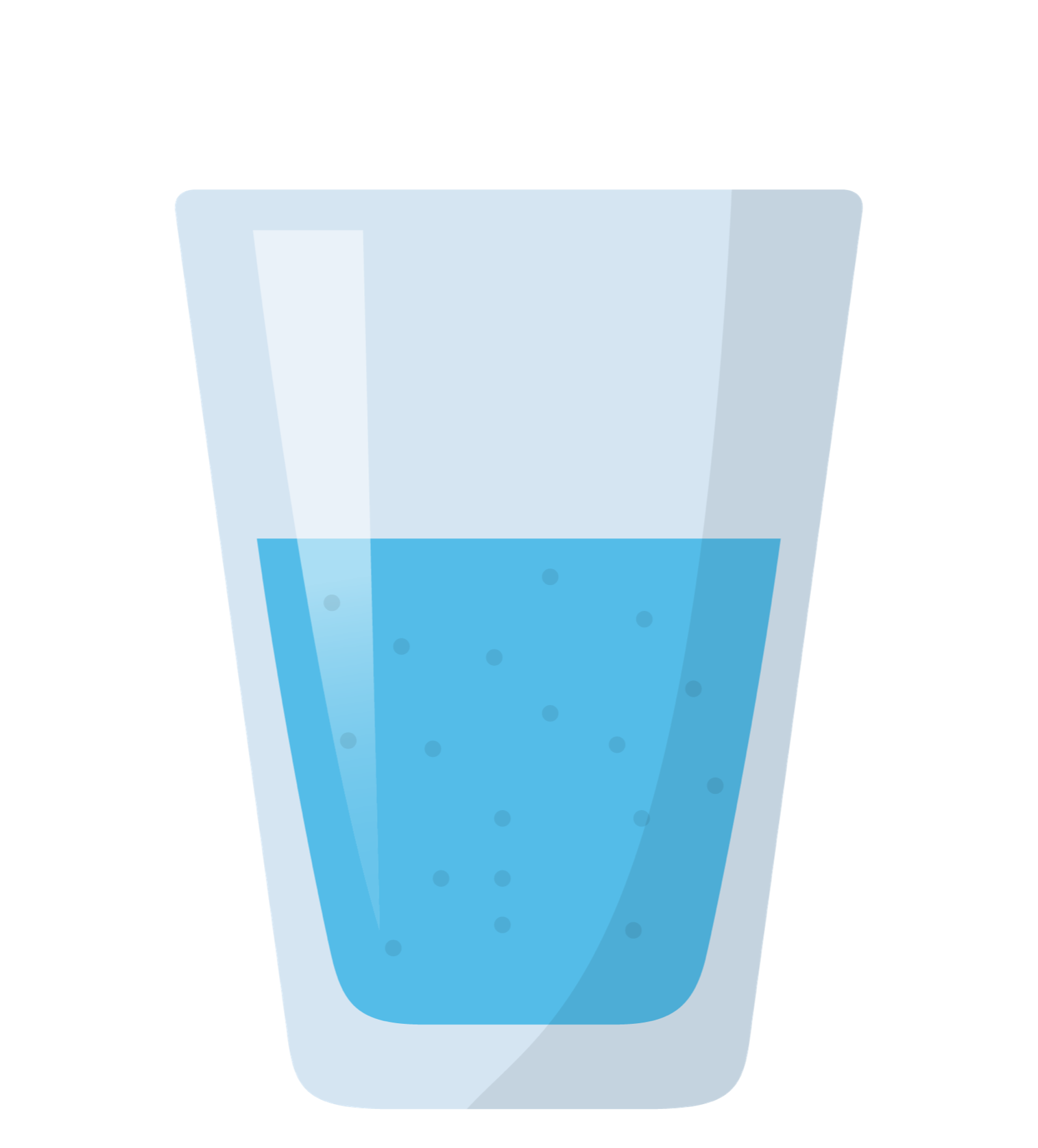
My water looks, smells, or tastes unusual
A difference in taste or smell can sometimes be due to the chemical make up of your water, which varies across the country. Discolouration, such as brown water in your area, can also occur and it's usually nothing to worry about. Use the dropdown menu below to help identify and resolve your issue.
How would you best describe your water?
Try running through these steps to help clear your water.

Run your tap
Running your tap for around 20 minutes should clear the red or brown discolouration. Make sure to only run the tap gently, a forceful flow may disturb the sediment even more. Instead of letting the water go down the drain, you could collect it in your washing-up bowl or a container. It may be discoloured but you can still use it around your garden.

Check with your neighbours
You can ask your neighbours to check their water. If they're also experiencing discolouration, it's likely that a burst pipe or other works has caused it.
Check for live updates in your area
Use our interactive map to identify any water-related issues in your area. Our map lets you know about significant works going on – as opposed to all works – and is based on what exactly needs doing, how many residents are affected and how long we expect the work to last.
Check for live updates in your area
Use our interactive map to identify any water-related issues in your area. Our map lets you know about significant works going on – as opposed to all works – and is based on what exactly needs doing, how many residents are affected and how long we expect the work to last.
When identifying and resolving the issue, there are a couple of different things you can try.

Run your tap
If you've not used your tap for a long period of time, it's best to let it run for a few minutes. This will flush any standing water and ensure you've got a fresh supply in your pipes. Rather than letting it go down the drain, you can collect this standing water in your washing-up bowl and use it around your garden.

Check your fittings
The kinds of bacteria that can cause a musty taste or smell may grow on valves, washers and other fittings. You may need to check they are all compliant with the Water Regulations and replace any if necessary.

Check your hot and cold water pipes aren't touching
The heat transfer between the hot and cold pipes can also cause bacterial growth, so you or a plumber should check that they aren't touching. If they are close together, you may need to insulate or 'lag' your water pipes to stop the transfer.
Check for live updates in your area
Use our interactive map to identify any water-related issues in your area. Our map lets you know about significant works going on – as opposed to all works – and is based on what exactly needs doing, how many residents are affected and how long we expect the work to last.
Check for live updates in your area
Use our interactive map to identify any water-related issues in your area. Our map lets you know about significant works going on – as opposed to all works – and is based on what exactly needs doing, how many residents are affected and how long we expect the work to last.
How to get rid of the metallic taste or smell

Run your tap
Running your tap for a few minutes will bring fresh water into your property and flush the system. This will usually resolve the metallic taste or smell. Instead of letting the water go down your drain, you could collect it in your washing-up bowl or another container to water your plants with.

Check your storage tank
If you have a water storage tank, it's also worth checking what it's made from and what condition it's in as this could be behind the taste or smell.
Check for live updates in your area
Use our interactive map to identify any water-related issues in your area. Our map lets you know about significant works going on – as opposed to all works – and is based on what exactly needs doing, how many residents are affected and how long we expect the work to last.
Check for live updates in your area
Use our interactive map to identify any water-related issues in your area. Our map lets you know about significant works going on – as opposed to all works – and is based on what exactly needs doing, how many residents are affected and how long we expect the work to last.
Once established, it’s difficult to totally remove the organism that causes pink staining. Following these steps can help you control re-growth.

Use a bleach-based cleaner
The most effective way of controlling re-growth is by regular cleaning with a bleach-based cleaning product. Pay particular attention to areas where soap residue may accumulate and leave the cleaner to act for about half an hour before rinsing.

Avoid abrasive cleaning products
Using abrasive cleaning products can encourage re-growth as they leave a rough surface where the bacteria can take hold. This is often why Serratia is seen on grout but not on tiles.

Check your storage tank
If you have a water storage tank that feeds into showers and internal plumbing, you should check that it isn't open to the atmosphere. Installing a securely-fitting lid should stop dust and debris from falling into the tank. We also recommend that you check the tank itself for sediment and deposits. These may reduce the amount of chlorine in the water and help create conditions in which bacteria like Serratia can grow.
Check for live updates in your area
Use our interactive map to identify any water-related issues in your area. Our map lets you know about significant works going on – as opposed to all works – and is based on what exactly needs doing, how many residents are affected and how long we expect the work to last.
Check for live updates in your area
Use our interactive map to identify any water-related issues in your area. Our map lets you know about significant works going on – as opposed to all works – and is based on what exactly needs doing, how many residents are affected and how long we expect the work to last.
Once established, fungal growth can be difficult to get rid of entirely. Following these steps can help you manage it.

Use a bleach-based cleaner
The most effective way of controlling re-growth is through regular cleaning with a bleach-based cleaning product. You should pay particular attention to areas where soap residue may accumulate. For the best result, try to leave the product on for about 30 minutes before rinsing. Avoid using abrasive cleaning products as they can leave a rough surface where the fungi can take hold.

Check your storage tank
Check storage tanks which feed showers and internal plumbing to make sure they aren’t open to the atmosphere. If so, installing a secure lid will stop dust and debris from falling into the tank. You should also check the tank for sediment and clean it if necessary. These deposits can reduce the amount of chlorine in the water and help create conditions in which fungi can grow.

Improve ventilation
Improving ventilation in your home and keeping surfaces dry is one of the best ways to prevent growth.
Check for live updates in your area
Use our interactive map to identify any water-related issues in your area. Our map lets you know about significant works going on – as opposed to all works – and is based on what exactly needs doing, how many residents are affected and how long we expect the work to last.
Check for live updates in your area
Use our interactive map to identify any water-related issues in your area. Our map lets you know about significant works going on – as opposed to all works – and is based on what exactly needs doing, how many residents are affected and how long we expect the work to last.
How to resolve dark particles in your water or purple spots

Run your cold tap
First, try running your tap for around 20 minutes and wait to see if this clears the discolouration. When doing this, you should only run your tap on a gentle flow to avoid disturbing the manganese even more. You can also collect this water in your washing-up bowl and keep it to use around your garden.

Check with your neighbours
If your neighbours are also having the same issue, it's likely that a burst main or other activity is causing the discolouration in your area.
Check for live updates in your area
Use our interactive map to identify any water-related issues in your area. Our map lets you know about significant works going on – as opposed to all works – and is based on what exactly needs doing, how many residents are affected and how long we expect the work to last.
Check for live updates in your area
Use our interactive map to identify any water-related issues in your area. Our map lets you know about significant works going on – as opposed to all works – and is based on what exactly needs doing, how many residents are affected and how long we expect the work to last.
Try running through these steps to help clear your water.

Leave the water to stand
As the air bubbles slowly float to the surface, the water will clear. If you pour a glass of water, you should be able to see it clear from the bottom up.

Run your cold tap
Running your cold tap at full flow can help to clear any trapped air in your pipes. This should be the tap that's closest to your internal stop tap. Why not collect this water in your washing-up bowl? You can use it around your garden instead of letting it go down the drain.

Check your stop taps
Sometimes, a faulty stop tap, or one that is partially open, can cause white or cloudy water. When you check them, make sure that they're fully open.
Check for live updates in your area
Use our interactive map to identify any water-related issues in your area. Our map lets you know about significant works going on – as opposed to all works – and is based on what exactly needs doing, how many residents are affected and how long we expect the work to last.
Check for live updates in your area
Use our interactive map to identify any water-related issues in your area. Our map lets you know about significant works going on – as opposed to all works – and is based on what exactly needs doing, how many residents are affected and how long we expect the work to last.
What can I do about the taste or smell?

Fill a clean glass container
Run some water from your kitchen tap into a clean jug or other glass container.

Cover and put it in your fridge
If your container doesn't have a lid, cover it with a clean cloth and let it stand in your fridge for about an hour or until chilled. This helps to reduce the residual chlorine level.

Replace after 24 hours
You shouldn't keep the water longer than 24 hours. This is because bacteria may start growing again and make the water unsafe to drink.
Check for live updates in your area
Use our interactive map to identify any water-related issues in your area. Our map lets you know about significant works going on – as opposed to all works – and is based on what exactly needs doing, how many residents are affected and how long we expect the work to last.
Check for live updates in your area
Use our interactive map to identify any water-related issues in your area. Our map lets you know about significant works going on – as opposed to all works – and is based on what exactly needs doing, how many residents are affected and how long we expect the work to last.
What do we do to maintain water quality?
As well as making sure water is wholesome, water companies also have to consider if drinking water is acceptable to consumers in terms of its appearance, taste and smell to meet the Water Supply (Water Quality) Regulations.
Your water goes through a complex treatment process before it reaches your taps. We also regularly take samples of drinking water at our water supply works, service reservoirs and customer taps.
We analyse hundreds of thousands of samples each year to comply with the water quality standards. If any of our works may affect quality, for example repairing a burst supply pipe, we'll always carry out checks to make sure the water hasn't been affected.

You may also be interested in...
Did you find the information you are looking for?



















